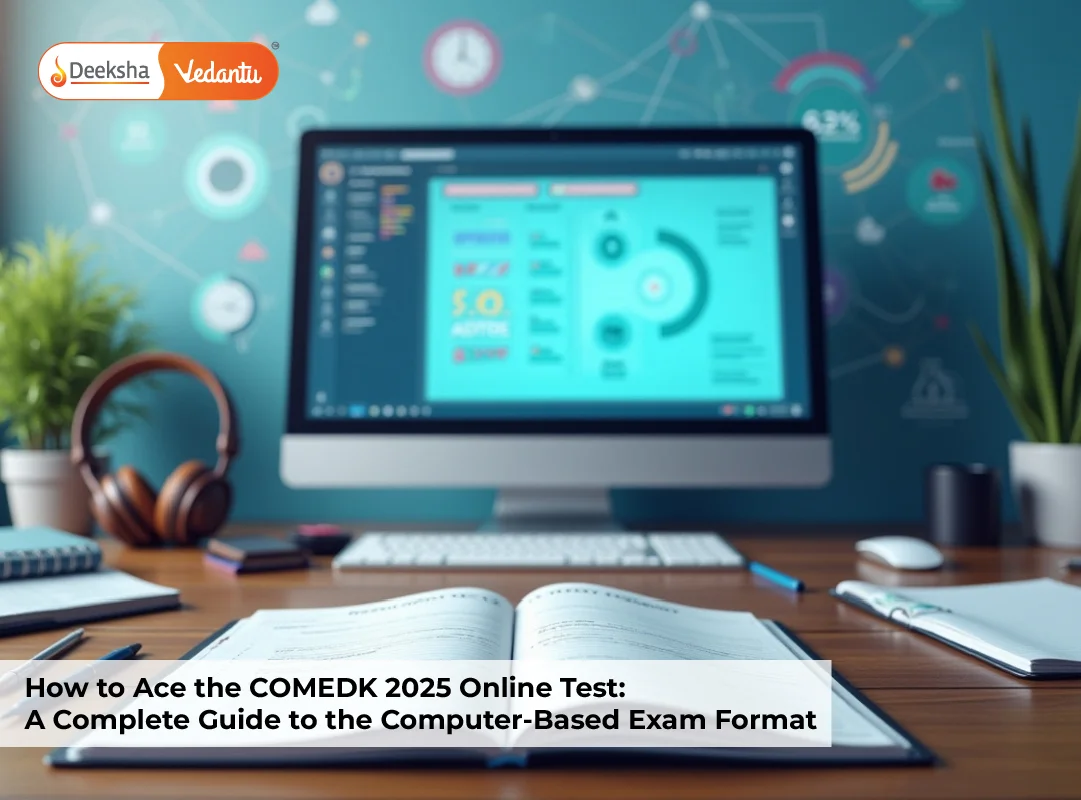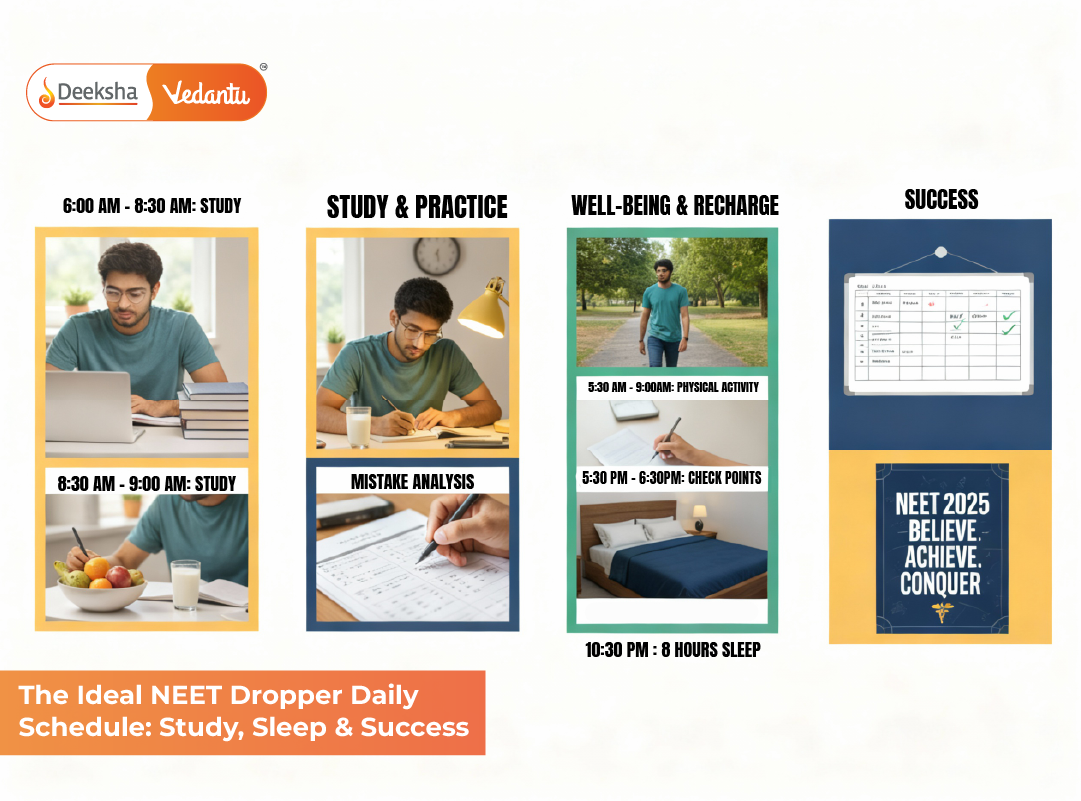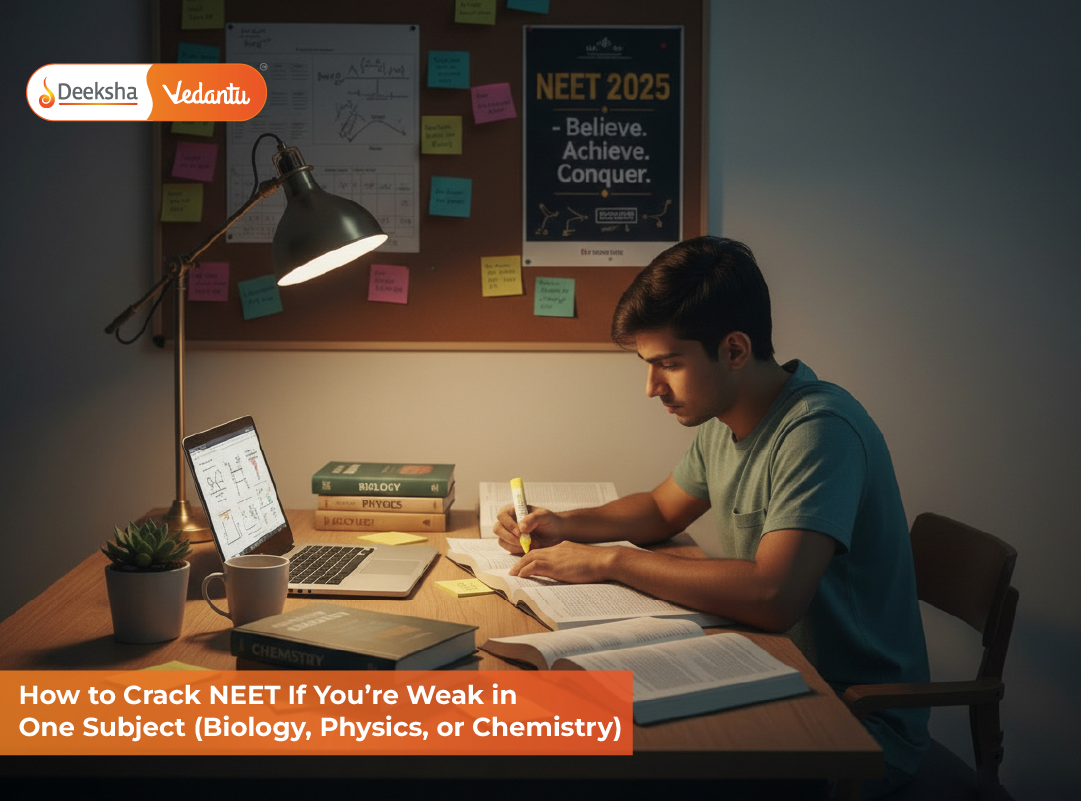Overview of COMEDK 2025 Online Test
The COMEDK UGET 2025 is a highly competitive entrance exam that serves as a gateway to private engineering colleges in Karnataka. Conducted by the Consortium of Medical, Engineering, and Dental Colleges of Karnataka (COMEDK), this exam is designed to assess students’ knowledge in Physics, Chemistry, and Mathematics.
Over the years, COMEDK has transitioned to a fully computer-based test (CBT) format, ensuring a standardized and transparent evaluation process. This shift has made it crucial for students to familiarize themselves with the online test format, navigation tools, and digital answering techniques to maximize their performance.
Importance of Understanding the Exam Format
Many students focus solely on subject preparation but underestimate the importance of understanding the exam’s online interface. Familiarity with the computer-based testing environment can:
- Enhance accuracy and efficiency by reducing time spent on figuring out navigation.
- Minimize stress and anxiety by ensuring candidates are comfortable with the interface.
- Improve time management by helping students switch between sections smoothly and review answers effectively.
Mastering the COMEDK 2025 online test format is just as important as subject preparation. This guide will provide expert insights, key strategies, and technical tips to help students ace the computer-based test with confidence.
Understanding the COMEDK 2025 Exam Structure
Exam Pattern
The COMEDK 2025 exam pattern follows a structured format designed to test students’ knowledge in Physics, Chemistry, and Mathematics. As a computer-based test (CBT), it requires candidates to be familiar with the digital answering process, navigation tools, and time management strategies. Understanding the exam structure in advance can help students strategize their preparation and perform efficiently on test day.
Mode of Examination: Computer-Based Test (CBT)
The COMEDK UGET 2025 will be conducted in an online mode across multiple test centers in India. Candidates will need to:
- Answer questions on a computer screen instead of a physical paper.
- Use the mouse to select answers and navigate between questions.
- Mark questions for review and revisit later if time permits.
- Submit answers before the three-hour time limit expires.
A basic understanding of computer-based tests is crucial to avoid confusion during the actual exam. Candidates are encouraged to practice with mock tests to get accustomed to the CBT environment.
Duration: 3 Hours (180 Minutes)
The total exam duration is three hours (180 minutes). Within this timeframe, candidates must:
- Attempt 180 multiple-choice questions (MCQs).
- Manage their time effectively to complete all sections.
- Allocate an average of one minute per question to ensure they attempt the entire paper.
Proper time allocation and practice with mock exams can help students complete the test efficiently without rushing through the last few questions.
Number of Questions & Subjects Covered
| Subject | Number of Questions | Maximum Marks |
| Physics | 60 | 60 |
| Chemistry | 60 | 60 |
| Mathematics | 60 | 60 |
| Total | 180 | 180 |
Each subject carries equal weightage, making it essential for students to devote equal preparation time to all three areas. Ignoring one subject can significantly impact the final score.
Marking Scheme
- +1 mark is awarded for every correct answer.
- No negative marking, which means candidates can attempt all questions without fear of losing marks.
- No deductions for incorrect or unanswered questions, allowing students to take calculated guesses.
Since there is no penalty for wrong answers, students should attempt all 180 questions to maximize their scores. If unsure about an answer, eliminating incorrect options and making an educated guess can improve overall performance.
Key Takeaways from the COMEDK Exam Pattern
- Familiarity with the CBT format is essential to avoid confusion on exam day.
- Time management is crucial—students must answer questions efficiently within 180 minutes.
- Equal weightage for all subjects means balanced preparation is required.
- No negative marking provides an advantage—attempting all questions is recommended.
By understanding the COMEDK 2025 exam structure, students can create an effective preparation plan and approach the test with confidence.
Subject-Wise Distribution
The COMEDK 2025 exam consists of three subjects—Physics, Chemistry, and Mathematics—each carrying equal weightage. Understanding the subject-wise distribution of questions helps students plan their study schedule effectively and allocate time based on their strengths and weaknesses.
Physics: 60 Questions
The Physics section tests conceptual understanding, numerical problem-solving, and application-based knowledge. Topics are drawn from Class 11 and 12 syllabi, focusing on:
- Mechanics (Newton’s Laws, Work, Energy & Power)
- Electrostatics & Current Electricity
- Waves & Oscillations
- Modern Physics & Semiconductor Devices
- Thermodynamics & Heat Transfer
Students should focus on numerical-based questions, as Physics often involves formula application and calculations.
Chemistry: 60 Questions
The Chemistry section comprises Organic, Inorganic, and Physical Chemistry topics. It requires a balance of theoretical knowledge, chemical reactions, and numerical problem-solving.
- Organic Chemistry: Reaction mechanisms, Hydrocarbons, Functional Groups
- Inorganic Chemistry: Periodic Table, Coordination Compounds, Chemical Bonding
- Physical Chemistry: Electrochemistry, Chemical Kinetics, Thermodynamics
Students should memorize chemical reactions and focus on conceptual clarity in physical chemistry numerical problems.
Mathematics: 60 Questions
Mathematics in COMEDK is highly application-based, requiring strong problem-solving skills and speed. Important topics include:
- Algebra (Quadratic Equations, Matrices & Determinants, Probability)
- Calculus (Limits, Differentiation, Integration)
- Coordinate Geometry (Straight Lines, Circles, Parabola, Hyperbola)
- Vectors & 3D Geometry
Regular practice of formulas and solving mock questions can help improve accuracy and speed.
Navigating the Computer-Based Test (CBT) Environment
The COMEDK 2025 is conducted in a computer-based test (CBT) mode, requiring students to be comfortable using an online exam interface. Understanding how to navigate the digital platform can help candidates attempt questions efficiently and manage time effectively.
Familiarization with the CBT Interface
Many students are used to pen-and-paper exams, making it important to get accustomed to the online interface before exam day.
Mock Tests
Practicing official COMEDK mock tests helps candidates:
- Get familiar with the online layout and navigation tools.
- Understand time management strategies while answering questions.
- Improve speed and accuracy by practicing in real exam conditions.
Students should take multiple mock tests before the exam to eliminate technical discomfort.
Navigation Tools
The COMEDK online test interface includes:
- Question Palette: Displays question numbers, indicating attempted, unanswered, and marked-for-review questions.
- Timer: Shows the remaining time to help students pace themselves.
- Mark for Review: Allows students to return to unanswered or doubtful questions later.
Candidates should practice navigating between questions, using the review function, and managing their time efficiently.
Technical Requirements and Guidelines
To ensure a smooth online exam experience, candidates should be aware of technical requirements and guidelines at the test center.
System Requirements
- The exam is conducted on secured computers at designated test centers.
- The system will have pre-installed software to prevent unauthorized access.
- No external devices like calculators or mobile phones are allowed.
Candidates do not need to bring personal laptops or gadgets, as the test center provides the necessary setup.
On-Site Protocols
- Arrive early to complete biometric verification and security checks.
- Follow test center instructions regarding system login and navigation.
- Report technical issues immediately to invigilators to avoid disruptions.
Being aware of COMEDK test center protocols helps candidates stay focused and avoid unnecessary stress during the exam.
Effective Preparation Strategies for COMEDK 2025
Preparing for COMEDK 2025 requires a well-structured approach that includes understanding the syllabus, effective time management, solving previous years’ papers, and mastering problem-solving techniques. Candidates who follow a strategic study plan and engage in consistent practice and revision tend to perform better in the exam. This section will cover essential preparation strategies to help students maximize their scores.
Comprehensive Study Plan
A structured study plan is essential to cover all topics systematically and avoid last-minute stress. The COMEDK syllabus 2025 is based on Class 11 and 12 NCERT topics, covering Physics, Chemistry, and Mathematics. Understanding the subject-wise weightage and important topics is the first step towards effective preparation.
Understanding the Syllabus
Candidates should start by analyzing the syllabus and identifying high-weightage topics. Below is an overview of the key topics under each subject:
Physics
- Mechanics (Newton’s Laws, Work, Energy & Power, Laws of Motion)
- Electrostatics & Current Electricity
- Modern Physics (Semiconductors, Photoelectric Effect, Dual Nature of Matter)
- Thermodynamics & Heat Transfer
- Waves, Optics, and Oscillations
Chemistry
- Organic Chemistry: Hydrocarbons, Functional Groups, Reaction Mechanisms
- Inorganic Chemistry: Periodic Table, Coordination Compounds, Chemical Bonding
- Physical Chemistry: Chemical Equilibrium, Electrochemistry, Thermodynamics
Mathematics
- Algebra: Quadratic Equations, Matrices & Determinants, Probability
- Calculus: Limits, Differentiation, Integration
- Coordinate Geometry: Straight Lines, Circles, Parabola, Hyperbola
- Vectors & 3D Geometry
Candidates should focus on concepts that have frequently appeared in past exams and practice numerical problems to enhance their problem-solving speed.
Time Management
Proper time allocation ensures balanced preparation for all subjects. Candidates should:
- Dedicate at least 6-8 hours per day for preparation.
- Allocate equal time to all three subjects, adjusting based on personal strengths and weaknesses.
- Include daily revision to reinforce concepts.
A sample weekly study plan can be structured as follows:
| Day | Subject 1 (2 hrs) | Subject 2 (2 hrs) | Subject 3 (2 hrs) | Revision & Practice (2 hrs) |
| Monday | Physics | Chemistry | Mathematics | Mock Test & Analysis |
| Tuesday | Mathematics | Chemistry | Physics | Solving Previous Papers |
| Wednesday | Chemistry | Physics | Mathematics | Concept Revision |
| Thursday | Mathematics | Chemistry | Physics | Timed Quiz |
| Friday | Physics | Mathematics | Chemistry | Quick Topic Review |
| Saturday | Mock Test | Analysis & Improvement | Doubt Clearing | Subject-Specific Practice |
| Sunday | Full-Length Mock Test | Review & Strategy Adjustment | Rest & Light Revision | – |
Following a structured study plan with frequent revisions and self-assessments ensures steady progress.
Practice and Revision
Previous Years’ Papers
Solving past COMEDK question papers is one of the best ways to:
- Identify frequently asked topics and high-weightage concepts.
- Improve speed and accuracy by simulating real exam conditions.
- Understand the difficulty level and question distribution.
Candidates should aim to solve at least 10-15 past year papers before the exam.
Regular Quizzing
Timed quizzes are an effective way to:
- Improve problem-solving speed and reduce calculation errors.
- Develop quick decision-making skills to attempt more questions correctly.
- Build confidence for the actual exam.
Candidates should take daily quizzes focusing on different subjects and track their performance using a mistake log.
A mock test strategy can be followed as:
- Take one full-length mock test every 3-4 days.
- Analyze mistakes and focus on weak areas.
- Reattempt incorrectly answered questions after reviewing concepts.
Mock tests help students gain familiarity with the actual exam format, enhancing their test-taking strategies.
Expert Insights
Experts recommend conceptual clarity and analytical thinking to tackle COMEDK effectively. Below are key strategies recommended by subject experts.
Conceptual Clarity
- Rote memorization is not sufficient for Physics and Mathematics; understanding formulas and concepts is key.
- Chemistry requires balanced preparation, focusing on reaction mechanisms, numerical problems, and theoretical concepts.
- Regular conceptual revision using flowcharts and summary notes can help retain information.
Problem-Solving Techniques
Experts emphasize solving problems analytically rather than relying on shortcuts. Key techniques include:
- Breaking down complex problems into smaller steps.
- Using elimination techniques for MCQs.
- Skipping difficult questions initially and returning to them later to save time.
Avoiding Common Mistakes
- Spending too much time on a single difficult question instead of moving forward.
- Not reading questions carefully, leading to calculation errors.
- Ignoring units and conversion factors, especially in Physics and Chemistry numerical problems.
By following these expert insights, students can enhance their accuracy and efficiency in the exam.
Test-Day Strategies for COMEDK 2025
Preparing well for COMEDK 2025 is important, but applying the right test-day strategies is equally crucial for achieving a high score. Effective time allocation, question prioritization, and stress management can help students stay focused and maximize their performance.
Time Allocation
Managing time efficiently is key to ensuring that all 180 questions are attempted within the 3-hour (180-minute) exam duration.
Section Management
- Mathematics (60 questions): Since it involves calculations, candidates should allocate at least 60-70 minutes to this section.
- Physics (60 questions): Requires a mix of conceptual understanding and numerical application. Candidates should spend 50-60 minutes on this section.
- Chemistry (60 questions): Mostly theory-based, making it the fastest to complete. Candidates should finish this section in 40-50 minutes.
Candidates should keep the last 10-15 minutes for reviewing marked questions and ensuring no question is left unanswered.
Question Prioritization
- Start with easier questions first to gain momentum and secure quick marks.
- Skip time-consuming questions and return to them later.
- Use elimination techniques for multiple-choice questions where unsure.
- Since there is no negative marking, attempt every question, even if unsure.
Handling Exam Stress
Exam pressure can affect performance, so it is essential to stay calm and focused throughout the test.
Relaxation Techniques
- Deep Breathing: Inhale deeply for 4 seconds, hold for 4 seconds, and exhale slowly for 6 seconds. This calms nerves and improves focus.
- Mindfulness: Focus on one question at a time instead of worrying about the overall paper.
Positive Visualization
- Imagine a successful outcome before entering the exam hall to boost confidence.
- Avoid negative thoughts and remind yourself of your preparation efforts and strengths.
By following these test-day strategies, students can effectively manage time, reduce anxiety, and perform at their best in COMEDK 2025.
Common Pitfalls and How to Avoid Them
While preparing for COMEDK 2025, many students make common mistakes that can negatively impact their performance. Overlooking key aspects such as mock tests and weak areas can lead to avoidable errors on exam day. Here’s how to recognize and avoid these pitfalls.
Overlooking Mock Tests
Consequence:
Many students focus solely on studying theory and solving individual problems but ignore full-length mock tests. This results in:
- Lack of familiarity with the exam interface, leading to confusion during the actual test.
- Poor time management, as students struggle to allocate time efficiently across all three sections.
- Increased anxiety, since the CBT format can feel unfamiliar if not practiced in advance.
Solution:
- Take at least 10-12 full-length mock tests before the actual exam.
- Use official COMEDK mock tests to get accustomed to the real test format.
- Analyze performance after each mock test, focusing on mistakes and improving weak areas.
- Simulate real exam conditions—set a timer, sit in a quiet place, and complete the test without distractions.
Regular mock test participation builds confidence, improves speed, and enhances familiarity with the computer-based test environment.
Ignoring Weak Areas
Consequence:
Students often focus too much on their strengths, neglecting topics they find difficult. This can lead to:
- Persistent knowledge gaps, reducing overall performance.
- Struggles with difficult questions on exam day, affecting confidence and time management.
- Lower sectional scores, impacting the final rank and college admission chances.
Solution:
- Identify weak subjects and topics early in preparation.
- Allocate at least 30-40% of study time to revising difficult areas.
- Seek conceptual clarity through online resources, video lectures, or expert guidance.
- Solve past year papers and topic-specific quizzes to strengthen weaker sections.
By consistently working on weaker areas, students can ensure a well-rounded preparation, improving their chances of scoring higher in COMEDK 2025.
Recap of Key Points
Success in COMEDK 2025 requires a structured study plan, consistent practice, and familiarity with the online test format. A well-balanced preparation strategy that includes mock tests, revision, and time management is crucial for maximizing performance. Understanding the CBT environment in advance can reduce test-day anxiety and help students navigate the interface smoothly.
By practicing previous years’ papers, solving timed quizzes, and working on weak areas, students can significantly improve their accuracy and confidence. Staying updated with exam guidelines, marking schemes, and test-day strategies will further enhance preparation.
Encouragement for Aspirants
Preparing for a competitive exam like COMEDK can be challenging, but maintaining a positive mindset is equally important. Candidates should:
- Stay motivated by setting small goals and tracking progress.
- Seek guidance from teachers, mentors, and online resources to clarify doubts.
- Stay consistent with revision and practice tests to build confidence.
With the right preparation and mindset, aspirants can approach the exam with determination and clarity.
Explore Deeksha’s COMEDK 21-Day Crash Course
For students looking for structured coaching and expert guidance, Deeksha’s COMEDK 21-Day Crash Course offers everything you need to boost your final preparation. This program is designed specifically for COMEDK aspirants with:
- Comprehensive subject-wise coaching tailored for engineering entrance exam success.
- Expert mentorship from experienced educators who specialize in guiding students through competitive exams.
- Live doubt-solving, mock tests, and recorded revision sessions to ensure complete syllabus mastery in just 21 days.
Learn more here: Deeksha’s COMEDK 21-Day Crash Course and take a step toward achieving success in COMEDK 2025.
Table of Contents










Get Social